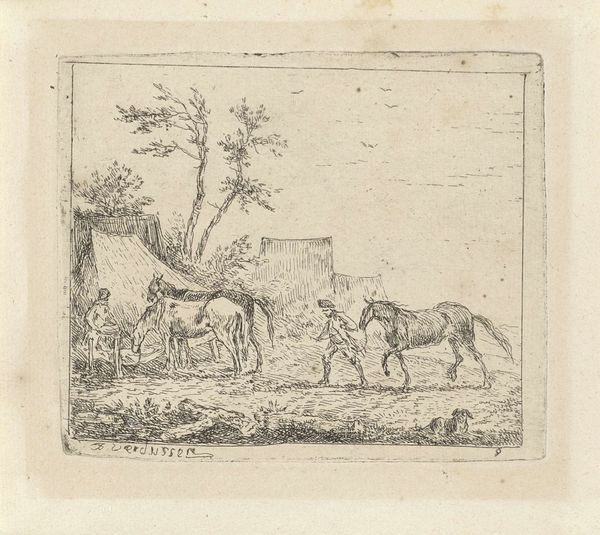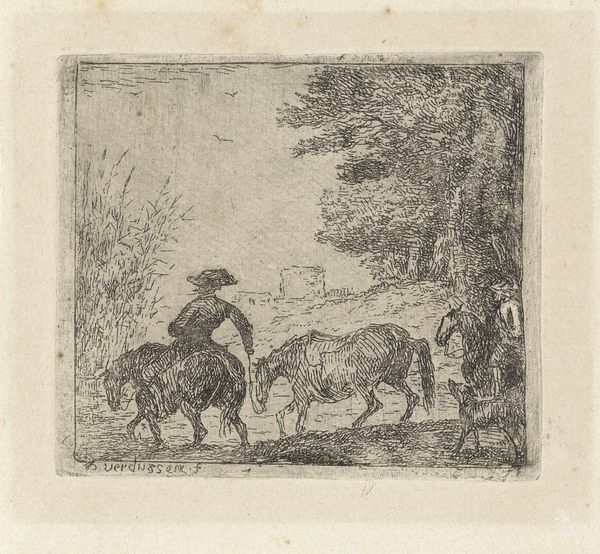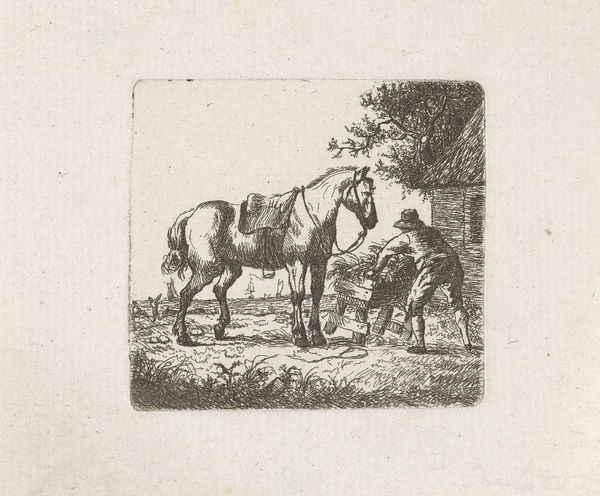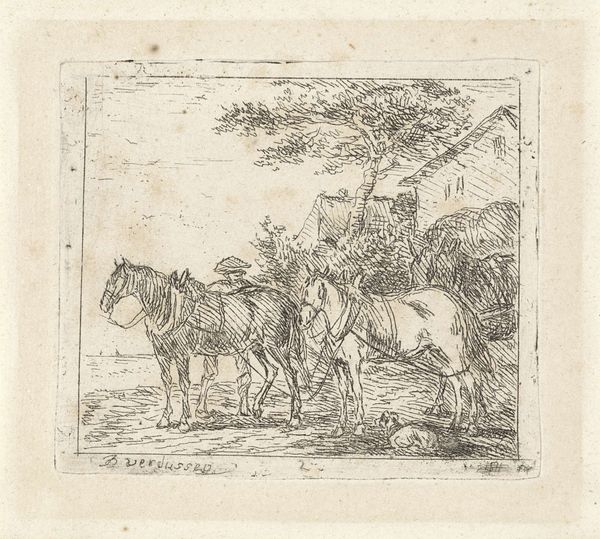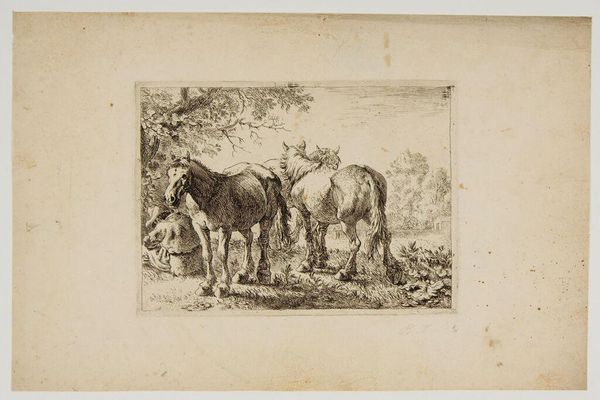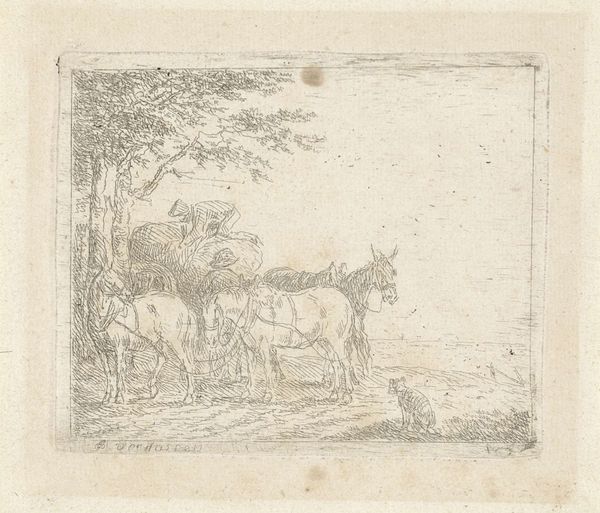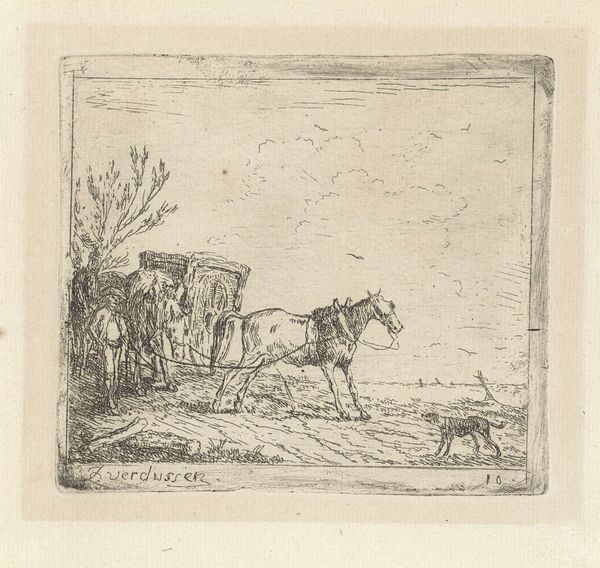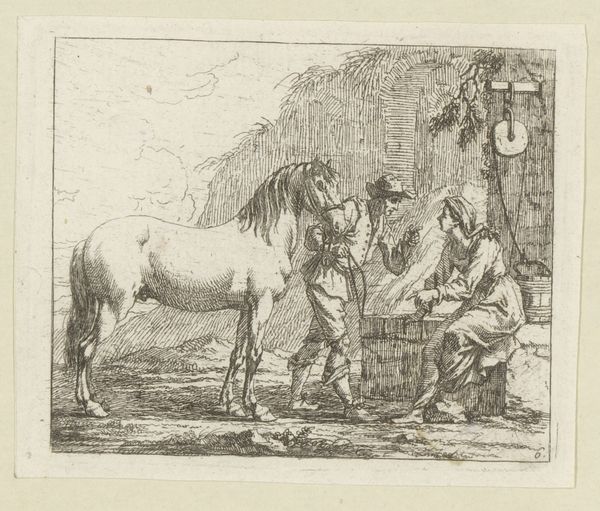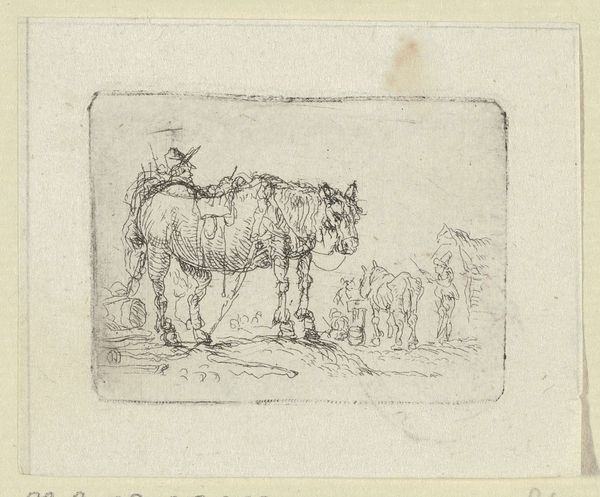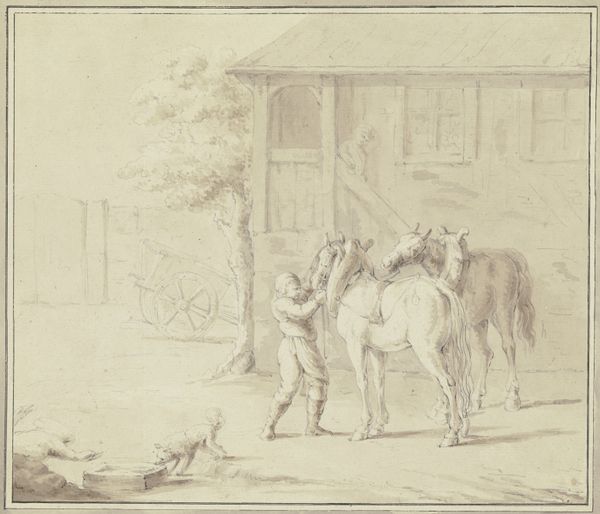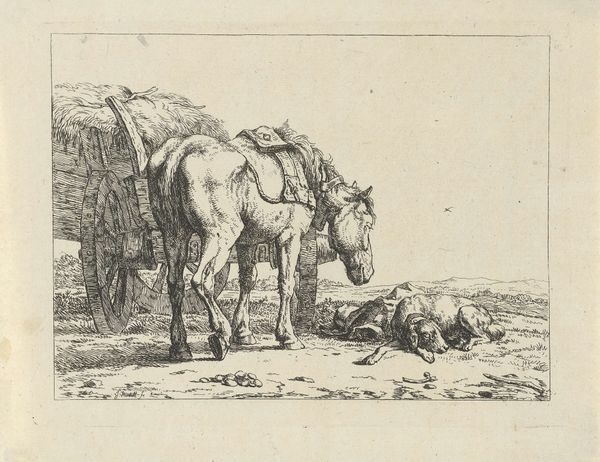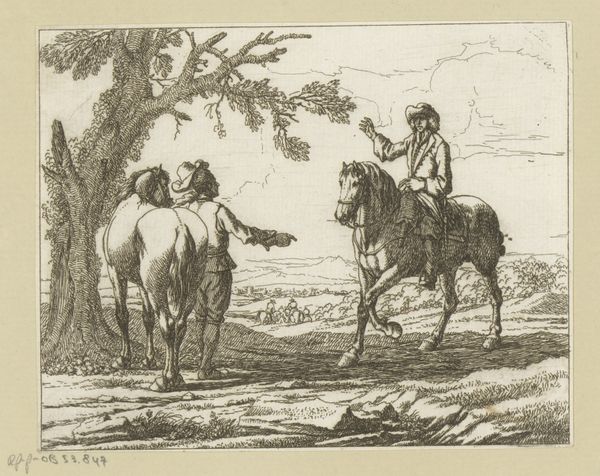
drawing, ink
#
drawing
#
baroque
#
dog
#
landscape
#
ink
#
horse
#
genre-painting
Dimensions: height 99 mm, width 116 mm
Copyright: Rijks Museum: Open Domain
Curator: Let’s consider this drawing by Jan Peeter Verdussen, titled "Ruiter voor een huis, met figuren en een hond," created sometime between 1710 and 1763. Editor: My immediate impression is one of stillness, despite the implied journey suggested by the horse and rider. The fine lines create a sense of quiet observation, as though we’re glimpsing a fleeting moment. Curator: Absolutely. Verdussen places this genre scene—the rider, figures, and dog before the house—within a web of societal roles and visual cues. The horse, for example, historically signifies power and status. How does its presence speak to broader social hierarchies of the era? Editor: Well, the horse as a status symbol is an interesting entry point. Notice the dog at the bottom. Across cultures, the dog appears in heraldry, mythology, and folklore and frequently stands as a marker of loyalty, guardianship, and domestication. Here, the figures, animals, and landscape compose a layered snapshot of domestic life during that period. Curator: I agree. Considering this as a “genre-painting”, as its theme suggests, is useful. But let’s dig a bit deeper. Are the figures stock characters enacting familiar scenarios, or does Verdussen offer some social commentary? Editor: Perhaps both. We know that during the Baroque period, these genre scenes appealed to a growing middle class. In visual terms, Baroque sought dynamic movement, grandeur, and intricate detail to create spectacular, sensory experiences. Verdussen used humble ink lines instead of saturated colors. Still, by referencing established iconography—figures, dwellings, horses, dogs, etc.—the drawing gains familiarity. The images draw on pre-existing memories within our minds to enrich the moment. Curator: A critical reading reveals that seeming “ordinariness” as quite constructed, reflecting power dynamics in these ostensibly everyday interactions. For example, what do you make of the building being shrouded by an underlayment of diagonal line-work? Editor: That's very insightful. If the figures in the foreground present archetypes, or figures in allegorical procession, perhaps that obscured architectural reference in the background gestures to how institutions of authority begin to blur or erode during this time? It provides context, yet refuses to be explicitly definable, forcing the viewer to become complicit with a historical narrative. Curator: Precisely! This intersectional approach—examining how social identity markers converge in the drawing—offers insight into issues of identity, gender, race, and power present, even if subtly, within the drawing. Editor: I found it fascinating how, through seemingly simple strokes, Verdussen created a rich, multifaceted depiction with threads that tie into the cultural memory of its audience, centuries later. Curator: It serves as a reminder of how artistic expression reflects—and shapes—our understanding of societal and historical landscapes.
Comments
No comments
Be the first to comment and join the conversation on the ultimate creative platform.
